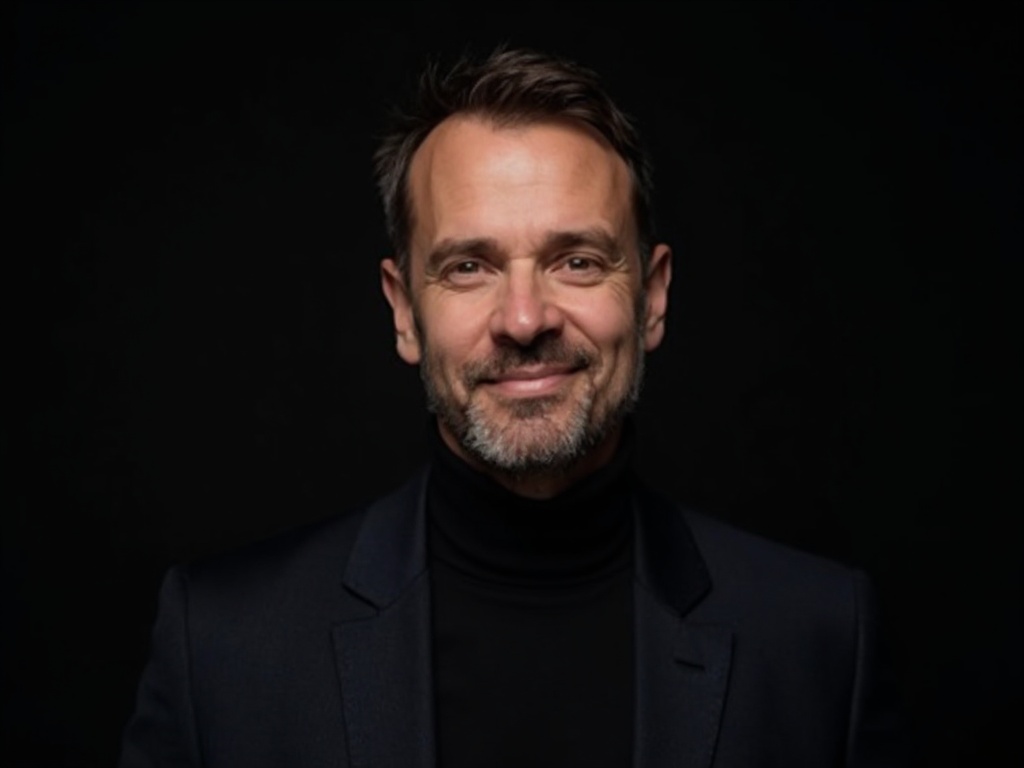Pre-Market Analysis at 5 AM

Most Fortune 500 CEOs start their financial day before the sun rises, with 73% beginning their market analysis by 5 AM according to a 2024 McKinsey executive survey. Tim Cook famously reads financial reports at 4:30 AM, scanning overnight market movements from Asian exchanges that could impact Apple’s global operations. This early bird approach isn’t just about dedication – it’s strategic timing that allows executives to digest critical information before making decisions that affect billions in market cap. CEOs typically spend 45-60 minutes reviewing pre-market futures, currency fluctuations, and overnight news that could move their stock price. The habit creates a crucial buffer zone where leaders can mentally prepare for potential market volatility before their first official meeting.
Revenue Dashboard Deep Dive

Top executives obsess over real-time revenue metrics, with 89% checking their company’s daily revenue dashboard within the first hour of their workday, according to Harvard Business Review’s 2024 CEO study. Microsoft’s Satya Nadella reportedly reviews Azure cloud revenue figures every morning, as this segment generates over $25 billion annually and drives the company’s growth story. These dashboards aren’t just pretty charts – they’re mission-critical intel that shapes everything from hiring decisions to strategic pivots. CEOs look for patterns in customer acquisition costs, lifetime value ratios, and seasonal trends that might not be obvious to middle management. The most successful leaders can spot a revenue problem brewing days or weeks before it shows up in quarterly reports.
Cash Flow Reality Check

While revenue grabs headlines, cash flow keeps companies alive, which explains why 94% of successful CEOs perform daily cash position reviews according to PwC’s 2025 executive survey. Amazon’s Andy Jassy maintains a religious focus on free cash flow generation, knowing that Amazon’s massive infrastructure investments require careful liquidity management. This isn’t just about having money in the bank – it’s about understanding the timing of when cash comes in versus when it goes out. Smart CEOs track accounts receivable aging, upcoming debt payments, and seasonal cash flow patterns that could create dangerous gaps. They’re essentially playing a high-stakes chess game where running out of cash means game over, regardless of how profitable the company looks on paper.
Market Position Monitoring

Leading CEOs spend significant time tracking their competitive position through real-time market share data, with 67% reviewing competitor performance metrics daily according to Deloitte’s 2024 leadership study. Netflix’s co-CEO Ted Sarandos reportedly checks streaming hours data against Disney+, HBO Max, and other rivals every morning to understand content engagement trends. This competitive intelligence goes beyond simple market share numbers to include customer sentiment analysis, pricing comparisons, and new product launches that could disrupt their business model. The best executives use this data to anticipate market moves rather than react to them after the damage is done. They’re constantly asking themselves whether their company is gaining ground, losing ground, or treading water in an increasingly competitive landscape.
Key Performance Indicator Scan

Every successful CEO has their “magic numbers” – the 5-7 KPIs that truly matter for their business, and 82% review these metrics before 9 AM according to Boston Consulting Group’s 2024 research. Tesla’s Elon Musk famously tracks daily production numbers from each Gigafactory, knowing that manufacturing efficiency directly impacts profitability and delivery targets. These aren’t vanity metrics like social media followers – they’re leading indicators that predict future financial performance. For a SaaS company, it might be monthly recurring revenue growth and churn rates; for retail, it could be same-store sales and inventory turnover. The key is having metrics that provide early warning signals about business health, allowing CEOs to course-correct before problems become crises.
Investment Portfolio Assessment

Beyond their primary business, top CEOs manage significant personal and corporate investment portfolios, with 91% conducting daily portfolio reviews according to Goldman Sachs’ 2024 executive wealth management report. Warren Buffett still reads annual reports every morning and checks Berkshire Hathaway’s stock positions, even though his portfolio is worth over $100 billion. This isn’t just about personal wealth – many CEOs need to understand how their investment performance affects their company’s balance sheet and pension obligations. They track everything from treasury management to strategic equity stakes in other companies that could provide future business opportunities. The most sophisticated executives use their investment insights to spot industry trends that might impact their core business operations.
Expense Analysis and Cost Control

Cost management remains a daily obsession for successful CEOs, with 78% reviewing expense reports and budget variances each morning according to Ernst & Young’s 2025 executive survey. Marc Benioff of Salesforce reportedly examines departmental spending reports daily, especially during economic uncertainty when every dollar of efficiency matters. This granular approach helps CEOs spot spending patterns that might indicate operational problems or opportunities for optimization. They’re looking for expense categories growing faster than revenue, vendor costs that seem out of line with market rates, and departmental budgets that consistently run over target. The goal isn’t penny-pinching – it’s ensuring that every dollar spent generates maximum return on investment for shareholders.
Debt and Credit Facility Review

Managing corporate debt requires constant attention, which is why 85% of Fortune 500 CEOs review their debt positions and credit facilities daily according to Moody’s 2024 corporate finance study. Disney’s Bob Iger carefully monitors the company’s debt-to-equity ratios and credit ratings, especially after major acquisitions that can strain the balance sheet. CEOs track interest rate exposure, upcoming debt maturities, and compliance with loan covenants that could trigger expensive penalties or renegotiations. They also monitor their company’s credit default swap spreads and bond yields as early indicators of market confidence. Smart executives maintain relationships with multiple lenders and keep contingency financing plans ready, because credit markets can freeze quickly during economic downturns.
Currency and Commodity Risk Management

For global companies, currency fluctuations can make or break quarterly results, prompting 79% of multinational CEOs to review foreign exchange positions daily according to JPMorgan’s 2024 treasury management report. Starbucks’ Laxman Narasimhan closely watches coffee commodity prices and currency hedging positions, as small changes in bean costs or exchange rates can impact margins across thousands of locations. These executives use sophisticated hedging strategies to protect against adverse currency movements while maintaining upside potential when rates move in their favor. They also track commodity prices for key inputs like oil, steel, or agricultural products that directly affect their cost structure. The goal is minimizing financial surprises that could derail earnings guidance or strategic plans.
Tax Optimization Strategy Updates

Tax strategy isn’t just a year-end concern for top CEOs – 71% review tax optimization opportunities daily according to KPMG’s 2024 executive tax survey. Apple’s Tim Cook works closely with tax specialists to monitor the company’s effective tax rate across different jurisdictions, as small changes in tax strategy can save or cost hundreds of millions annually. This includes tracking legislative changes, transfer pricing adjustments, and international tax treaty developments that could affect their global tax burden. CEOs also monitor state and local tax incentives for new facilities, R&D credits that might be expiring, and opportunities to optimize their corporate structure for tax efficiency. The complexity of modern tax law means that staying current on regulations and opportunities requires constant vigilance from executive leadership.
Investor Relations Preparation

Top CEOs dedicate significant time to investor relations, with 86% preparing daily talking points about their financial performance according to Investor Relations Society’s 2024 survey. JPMorgan Chase’s Jamie Dimon reportedly reviews analyst reports and institutional investor feedback every morning to understand market sentiment and potential concerns. This preparation goes beyond just knowing the numbers – it’s about crafting compelling narratives that explain company performance and future strategy in terms that resonate with different investor types. CEOs track analyst price targets, institutional ownership changes, and short interest levels that might indicate brewing problems with their stock. They also monitor peer company performance and valuation multiples to ensure their stock isn’t being unfairly discounted relative to competitors.
Merger and Acquisition Opportunity Scanning

Strategic acquisitions can transform companies overnight, which explains why 68% of growth-focused CEOs review potential M&A opportunities daily according to McKinsey’s 2025 corporate development study. Meta’s Mark Zuckerberg famously tracks emerging social media platforms and AI startups that could either compete with or enhance Facebook’s ecosystem. This scanning process involves monitoring company valuations, identifying strategic gaps in their portfolio, and maintaining relationships with investment bankers who bring deal opportunities. CEOs also track their competitors’ acquisition activities to ensure they’re not being outmaneuvered in key growth markets. The most successful executives maintain acquisition pipelines with dozens of potential targets at various stages of evaluation, ready to move quickly when the right opportunity emerges.
Board Meeting Financial Preparation

Board accountability drives much of CEO financial behavior, with 92% spending time daily preparing financial materials for upcoming board meetings according to Spencer Stuart’s 2024 board governance study. General Electric’s Larry Culp maintains detailed financial dashboards specifically designed for board consumption, knowing that directors need clear, concise explanations of complex financial performance. This preparation involves anticipating tough questions about margin compression, capital allocation decisions, and strategic investments that might not pay off immediately. CEOs also track metrics that board members care about most, such as return on invested capital, free cash flow generation, and progress against long-term financial targets. The goal is ensuring board meetings focus on strategic discussions rather than getting bogged down in financial explanation sessions.
Did you expect that the financial lives of top CEOs would be this methodical and data-driven?




